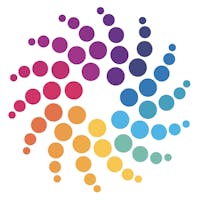As a young student in Germany, Philip Heimes recalls feeling “invisible” to his teachers. One of many in a classroom packed with students, his learning struggles often went unnoticed. He muddled through with low grades and the assumption that learning was wearisome and trying.
“I pulled through with grit, but I sincerely hated school,” explains Heimes.
His own school experiences have since fueled his drive to support data-driven personalized learning in an effort to make today’s schools engaging, fun and free of “the stress and angst” many students feel.
Fundamental to realizing this vision is helping teachers truly “see” their students through usable, connected data—specifically by encouraging adoption of the Ed-Fi Data Standard. By allowing student information systems, rostering tools, assessment software, etc. to connect and share data, the open-source data standard gives educators a clearer picture of students and their learning needs.
As a passionate data-driven education evangelist, Heimes has been anything but invisible as co-creator of EASOL, The Educator and Student Open Learning initiative; former Chief Technology Officer for the Center for Educational Innovation; and most recently, Principal Consultant for RESPEC, an organization that implements and promotes the Ed-Fi data model.
We caught up with him to talk about the benefits of adopting a data standard to support personalized learning as he was wrapping up a month-long tour through New Mexico introducing the Ed-Fi Data Standard to urban and remote village schools alike.
EdSurge: How did your own education influence the work you do today?
Philip Heimes: We had massive class sizes in Germany and I didn't get the resources I needed in most cases. And it was a similar experience for me when I arrived in the States and was exposed to the K-12 system that you have here. I learned differently, and with absolutely no personalized learning in place—it was another time after all—I was invisible in the back row.
But, today in a data-driven environment like Brooklyn Lab run by Erin Mote—one of my favorite schools—I would've received all the resources and would've struggled less.
I want to make it easy for teachers to read student data and the Ed-Fi data model does that. And therefore, they can actually have a very positive impact on the way they teach, the way they communicate with their colleagues, and have very comprehensive profiles of their classroom and individual students.
If I can change the educational experience of one child that might have had a similar experience as me—of feeling left behind or struggling, and not getting the resources they deserve—that’s what I want to fix.
What challenges do schools face today because their education tools don’t share a data standard?
Right now, if you go to an SEA—state educational agency—or a local educational agency, or an individual school, they will have a student information system, an assessment system, a content management system, a learning management system.
We’ve seen entities have up to eight different data sources, and with that they have eight different data silos. They can’t talk to one another. So, it’s very hard for a teacher, educator, or an administrator to get a very comprehensive view of the teacher, the environment, or a cohort of students. And it makes it very hard for data-driven education.
It’s very cumbersome for a teacher to aggregate all these different data sources that have different naming conventions, different standards, and so forth, and put it into one spot, one dashboard—to take a look and say, “here are my problem areas.” If I have to log in to seven different systems, for example, it makes it very difficult for me to get that comprehensive picture.
Tell me about the benefits a data-standard can bring to the classroom?
If all these systems have the same data standard, all systems can now talk to one another and the teacher can get all that information onto one dashboard, one report—or multiple reports. But the naming conventions, the relations, are connected and allow for data-driven decisions. Right?
And the reason why this is obviously very important is because now we know how an individual student is learning, how maybe a cohort of students is learning. And now, as a teacher, I know how to allocate resources or how to calibrate my teaching method.
Right now, here in New Mexico, they don’t have that capability. It’s very hard to preach data-driven education when data-driven education is unobtainable for most schools or LEAs or SEAs because they don’t have one coherent, cohesive data standard. That’s why one data standard will help individual teachers to make these decisions—right out of the gate.
How do you propose to solve the problem?
I’m in the trenches, meeting with schools and superintendents, and I see what they struggle with. A national data standard is absolutely key.
With one unified data model, you have the capacity and the capability of looking at a very holistic picture of how a student is doing, how a student is learning, and therefore we can actually address big problems. If it’s one data standard, you have a lot more freedom. And vendors can’t lock up their system anymore.
I believe very strongly in open-source technology. “Open source” means no more licensing for products. A district will spend millions of dollars in software that has a license attached. A very large percentage is just going to that license. Again, I find that’s very hard to sustain.
Take New Mexico as an example. New Mexico is plagued by budget cuts and it’s very hard for these schools—or the state, itself—to pay for these licenses. Then all of a sudden, you have this moment of Sophie’s Choice: “What do I cut here? But I need all of them.” It’s not sustainable.
What advice can you offer education leaders hoping to adopt a data standard for their education tools?
My recommendation, always will be to reach out to the Ed-Fi Alliance directly. They have a very strong voice in helping districts communicate with their vendors. Big vendors are big companies. A small, local educational agency might not have the muscle to talk to their vendors like New York City Public Schools or Clark County School District do. These districts have a stronger voice than the tribal school I just visited in New Mexico with 240 kids.
I think, as a struggling school district or a school district that is ready for innovation but doesn’t really know how to approach it, Ed-Fi Alliance is the biggest resource you can have.



